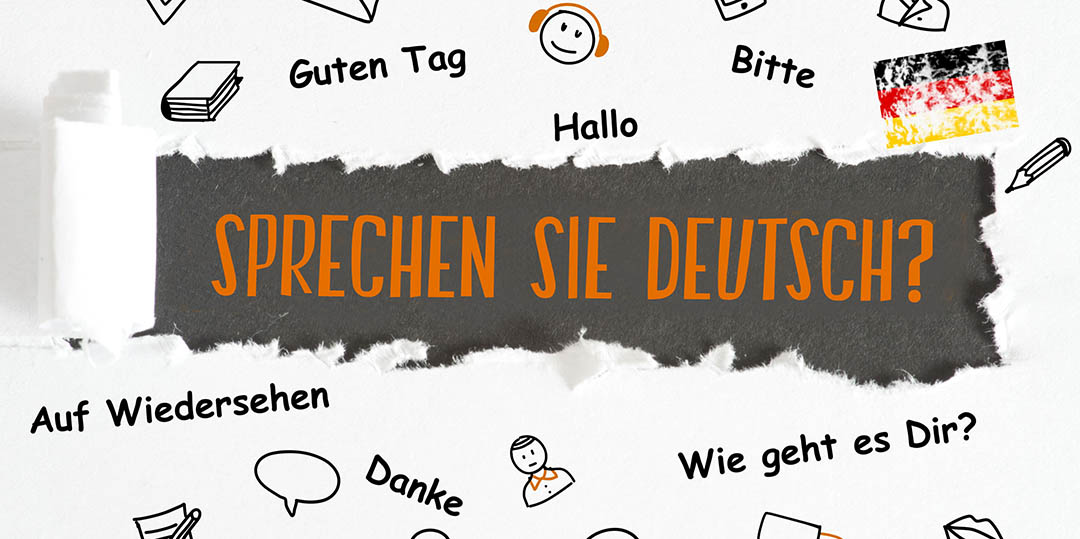
Understanding Different German Dialects
German is one of the most widely spoken languages in Europe, with over 130 million speakers across Germany, Austria, Switzerland, and beyond. Whether you’re learning German for travel, school, heritage, or business, understanding the different German dialects can help you speak more naturally and connect with native speakers on a deeper level.
In this guide, we’ll break down six of the most common types of German, explain where they’re spoken, and help you decide which to focus on—especially if you’re learning German online.
What Are German Dialects?
German isn’t just one uniform language. It’s a collection of rich regional dialects, each shaped by geography, history, and even other languages like French and Italian. While most learners are taught Hochdeutsch (High German), native speakers across German-speaking regions often use local dialects in daily life.
How Many German Dialects Are There?
Linguists estimate there are over 250 German dialects spoken around the world. Many are mutually intelligible, but some—like Swiss German—can be difficult for outsiders (and even native speakers) to understand.
Where Is German Spoken?
German is the official language of:
-
Germany
-
Austria
-
Switzerland
-
Liechtenstein
-
Luxembourg
-
Parts of Belgium
It’s also a recognized minority language in countries like Italy, Poland, Brazil, Slovakia, Russia, Kazakhstan, and Denmark.
6 Most Common German Dialects (With Real Examples)
1. High German (Hochdeutsch – Standard German)
Hochdeutsch is the standardized form of German used in schools, universities, media, and government. It’s what most people learn in German classes and online courses.
🟢 Used in: Germany (nationwide), Austria, Switzerland (formal settings)
🗣 Example Comparison:
| English | Hochdeutsch |
|---|---|
| Hello | Hallo |
| Thank you | Danke schön |
| I don’t know | Ich weiß nicht |
| What is your name? | Wie heißt du? |
📘 Learner Tip: Start with Hochdeutsch—it’s the foundation for all dialects and the most widely understood.
2. Low German (Plattdeutsch or Niederdeutsch)
Spoken in northern Germany, Low German sounds very different from standard German and has roots closer to English and Dutch. It’s declining in use but still spoken in rural areas and by older generations.
🟢 Used in: Hamburg, Bremen, Lower Saxony, parts of the Netherlands
🗣 Example Comparison:
| English | Hochdeutsch | Plattdeutsch |
|---|---|---|
| I don’t know | Ich weiß nicht | Ik weet dat nich |
| That’s good | Das ist gut | Dat is goot |
| How are you? | Wie geht’s dir? | Wo geiht di dat? |
📘 Learner Tip: Plattdeutsch is rarely taught formally, but you may hear it if you’re visiting northern Germany.
3. Bavarian German (Oberdeutsch or Bairisch)
Bavarian is spoken in southern Germany and parts of Austria. It has a sing-song rhythm and often drops consonants or merges vowels, making it difficult for non-locals to understand—even native speakers from Berlin might struggle.
🟢 Used in: Bavaria, parts of Austria (e.g., Salzburg)
🗣 Example Comparison:
| English | Hochdeutsch | Bavarian |
|---|---|---|
| Girl | Mädchen | Moid / Madl |
| I don’t know | Ich weiß nicht | I woaß ned |
| Thank you | Danke | Vergelt’s Gott |
| What is your name? | Wie heißt du? | Wia hoast’n? |
📘 Learner Tip: You’ll likely encounter this dialect at Oktoberfest or in traditional Bavarian towns.
4. Swiss German (Schwiizerdütsch)
Swiss German is more than a dialect—it’s almost a separate language. Influenced by French, Italian, and Romansh, it uses different words, grammar, and pronunciation. Even fluent German speakers may struggle to understand Swiss German without practice.
🟢 Used in: German-speaking parts of Switzerland (Zurich, Bern, Lucerne)
🗣 Example Comparison:
| English | Hochdeutsch | Swiss German |
|---|---|---|
| Thank you very much | Vielen Dank | Merci vilmal |
| I love you | Ich liebe dich | Ich lieb di |
| How are you? | Wie geht’s dir? | Wie gaht’s der? |
📘 Learner Tip: In Switzerland, people speak Swiss German but write in Hochdeutsch—so you’ll still be able to read signs and documents.

5. Middle German (Mitteldeutsch)
Middle German includes a variety of dialects spoken across central Germany, blending features of both High and Low German. These dialects are widely used in major cities and can vary significantly depending on the region.
🟢 Used in: Berlin, Cologne, Frankfurt, Dresden, and surrounding areas
🗣 Example Comparison:
| English | Hochdeutsch | Mitteldeutsch Variant |
|---|---|---|
| Head | Kopf | Kopp (Kölsch – Cologne) |
| I’m tired | Ich bin müde | Ick bin müd (Berlinerisch – Berlin) |
| Apple cider | Apfelwein | Äppelwoi (Hessisch – Frankfurt area) |
| What’s up? | Was ist los? | Wat is’n los? (general Central dialects) |
📘 Learner Tip: Dialects like Kölsch, Berlinerisch, and Hessisch are often used in casual settings and local media. They’re a great next step after mastering Hochdeutsch—especially if you’re planning to visit central German cities.
6. Austrian German (Österreichisches Deutsch)
Austrian German is officially the same as Hochdeutsch but with regional vocabulary, pronunciation, and food terms that make it feel distinct. Think of it like British vs. American English.
🟢 Used in: Austria (Vienna, Salzburg, Innsbruck)
🗣 Example Comparison:
| English | Hochdeutsch | Austrian German |
|---|---|---|
| Potato | Kartoffel | Erdapfel |
| Tomato | Tomate | Paradeiser |
| Whipped cream | Schlagsahne | Schlagobers |
| I’m hungry | Ich habe Hunger | I hob Hunger |
📘 Learner Tip: Austrian pronunciation is usually clearer than Bavarian, making it a good region for immersion trips.
Why Dialects Matter When Learning German
Understanding dialects helps you:
-
Avoid confusion in casual conversations
-
Blend in with locals
-
Recognize regional cultural cues
-
Travel more confidently
Many online learners are surprised when they visit Germany and hear words or accents they weren’t taught. Dialects prepare you for real-world language use.
Frequently Asked Questions About German Dialects
Q: Which German dialect should I learn first?
A: Always start with Hochdeutsch, which is understood across all German-speaking regions.
Q: Are German dialects mutually intelligible?
A: Some are (like Austrian and standard German), but others—like Swiss German—can be hard even for native speakers to understand without exposure.
Q: Will I learn dialects in an online course?
A: Yes—at LanguageBird, instructors expose students to regional phrases and pronunciation based on real-life usage and student interest.
Q: Can I visit Germany and speak just Hochdeutsch?
A: Yes. Locals will understand you, and most will adjust their speech. But knowing a few dialect words can show respect and help you connect.
Learn German Online—Standard and Dialects Included
At LanguageBird, we offer personalized 1:1 online German lessons led by native-level instructors. You’ll learn Hochdeutsch first, then explore regional dialects like Austrian German, Berlinerisch, or Swiss German based on your goals.
Learn more about German at LanguageBird and how our accredited, project-based approach helps learners of all ages succeed.




